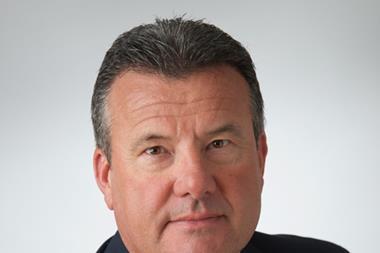How do you deal with super-rich clients?
The Paradise Papers exposé caused a particular headache for the super-rich.
The leak of 13 million documents showing where rich people stowed their cash didn’t reveal much law-breaking, but it did pose a significant reputational challenge for many of those affected.
The super-rich are often famous or powerful or both, and the strength of feeling surrounding super-rick tax evaders was clear. For an ultra high net worth (UHNW) individual, with investible assets of at least $30m, the reputational fallout from this kind of affair is a concern, particularly for those in the public eye, or those in positions of influence or power.
As media and PR commentator Mark Borkowski observed in his popular blog: “When does the reputational damage incurred by being hauled across the coals for using tax havens outweigh the financial benefits? Granted, siphoning wealth through a Maltese bank to buy a Lithuanian shopping mall isn’t exactly John le Carre levels of sinister. But when it happens to Bono we’ve got a problem - all his worthy campaigning now risks being made history… This, magnified by the thundering echo chamber of twitter branding the guilty without any of the hassle of formal process, ensures that it’s never been harder to be rich and famous.”
Whereas more traditional high net worth insurance clients may have focused on risk transfer products to cover their properties, art and jewellery collections and fleets of vehicles, for the ultra high net worth tangible items are more likely to be considered replaceable. Health, safety, “lifestyle”, reputation and other intangible exposures are higher on the list of concerns for the oligarchs and international jet set.
As Aon Private Clients managing director Ian McManus explains: “Clients at this level will often be prepared to share risk as in most cases they will have significant financial resources to draw upon. Understanding each client’s appetite for risk sharing at the outset of the relationship is critical and in that respect the approach is more akin to a mid-corporate risk.
”Whilst not all wealthy clients wish to entertain risk sharing, many have business backgrounds and as such can be more comfortable with less traditional arrangements such as self or co-insurance for elements of their portfolios. Advising clients in this area takes great care, but offers brokers an opportunity to differentiate by providing innovative solutions to our clients needs.
“Clients are, however, often more concerned for their personal safety and that of their family than their physical assets. Many clients are well advised through their own in house teams, single or multi-family offices but we should not assume they are all aware of range of solutions available in the market.
”Whilst the perception is usually greater than the actual risk of being involved in an incident, this is a genuine risk given the wealth and profile of UHNW clients, opening up conversations around kidnap and ransom, crisis management, and media protection products is invaluable to the client to provide peace of mind but also further increases our depth of relationship and value to the client.
”As an industry we have worked hard to improve wordings and make communications more intelligible for our clients, however many UHNW clients require covers that are highly specialised and are similar - if not identical - to those offered to corporate clients. Although UHNW often have professional advisors supporting them it is rare, in fact almost unheard of, for them to have a qualified insurance risk manager who can interpret the finer points which has the potential to cause issues at the point of claim. Time spent on preparing appropriate high quality documentation to support or confirm discussions will not only meet our regulatory obligations and avoid negatively impacting our client relationships further down the track but also helps to elevate our role in the eyes of the client.”
Among other things, brokers have seen a steady growth in demand for crisis protection and kidnap and ransom covers. Incidents such as the £8m robbery of Kim Kardashian in Paris in October 2016 only serve to heighten concerns around safety, even if the perception of the risk is different from the reality. Kardashian was left “badly shaken” when thieves broke into her Paris apartment and held her at gunpoint before making off with some of her jewellery.
Between 20,000 and 35,000 kidnappings for ransom take place take place each year globally, according to crisis management firm red24. It also estimates that over 70% are never reported to the authorities. In 2016 Bernie Ecclestone’s mother-in-law was kidnapped and held for nine days in Brazil by a gang who demanded a record £28m in ransom for her return. Information on whether ransoms have been paid are notoriously difficult to determine as insurers and others prefer to keep such information beneath the radar.
Cyber innovations
In a highly-digitised world demand has inevitably grown for cyber covers to be included in insurance products aimed at the ultra high net worth. The super rich make an attractive target for cyber criminals. Vulnerabilities inherent in the internet of things (IoT) and use of social media play a role, with the online activity of super-rich heirs on Instagram for instance increasingly used to bypass family security.
Cyber extortion is one of the fastest-growing cybercrimes, according to claims statistics from AIG EMEA. In February 2017, David Beckham’s PR agency was hacked by a group seeking £1m ransom. When its demands were not met numerous private email messages between Beckham and his PR agency were published. It followed the hacking of Pippa Middleton’s iCloud account, which contained photos of her nephew and niece Prince George and Princess Charlotte.
In just the past two months, Covéa and Oak Underwriting (in partnership with DAS) have added cyber to their suite of HNW insurance products, while start-up Rubica has been launched to protect wealthy individuals in the US from data leaks. Originally set up to target tech-aware Silicon Valley entrepreneurs, the company has now expanded to include Wall Street businessmen, politicians and celebrities.
As with corporate buyers, the super-rich are looking for more than risk transfer when they take out a cyber insurance policy, with a strong emphasis on cyber hygiene testing and 24-hour access to forensic IT and crisis management experts. “Cyber-crime costs the UK a cool £11 billion per year, which amounts to £210 for every British adult,” says Oak Underwriting Private Clients managing director Mark Coffey. “With over two billion Facebook users, 6,000 tweets every second and 60 million photos uploaded every day, cyber hacking is a major concern.”
“British police are warning that they are struggling to keep up with the pace of tech developments and there are a growing number of reported cases,” he continues. “High-net-worth individuals are particularly at risk and are looking for some form of protection, which includes access to the right experts.”
Hosted by comedian and actor Tom Allen, 34 Gold, 23 Silver and 22 Bronze awards were handed out across an amazing 34 categories recognising brilliance and innovation right across the breadth of UK general insurance.













































No comments yet